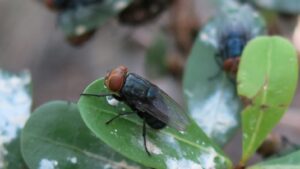U.S. President Donald Trump said on Monday that farming equipment has gotten too expensive and his administration would help tractor companies by removing some environmental rules that affect them.
New USDA Sterile Fly Facility Will Combat Screwworm
Reuters’ Leah Douglas reported that “U.S. Agriculture Secretary Brooke Rollins announced plans on Wednesday to open a sterile fly dispersal facility in Hidalgo County, Texas, as part of the country’s effort to fight the encroachment of New World screwworm.”
“The pest, a species of fly that has been eradicated in the U.S. for decades, has been moving northward in Mexico, leading the USDA to close the nation’s southern border to cattle imports in May,” Douglas reported. “The Department of Agriculture is also planning to design a sterile fly production facility at Moore Air Base, co-located with the dispersal facility, but that is likely to take two to three years, Rollins said at a press conference at the air base.”

“Rollins also said the USDA is working with state animal health officials to create emergency plans and to stockpile therapeutics in the case of the screwworm crossing into the country. Mexico has also taken efforts to limit the spread of the pest, which can infest livestock and kill within weeks,” Rollins said. “Rollins said she and her team are working closely with the Mexican government and that USDA staff have been working in Mexico on a collaborative response.”
What is New World Screwworm?
Progressive Farmer’s Jennifer Carrico reported that “NWS are fly larvae that infest living tissue of warm-blooded animals, causing infection. According to the Animal and Plant Health Inspection Service (APHIS), these maggots will burrow into a wound, feeding as they go doing extensive damage by tearing the host’s tissue with sharp mouth hooks. The wound becomes larger and deeper. NWS can cause serious, even deadly damage to the animal.”
“The adult screwworm flies are about the size of a common housefly with orange eyes, a metallic blue or green body, and three dark stripes along their backs. Affected mammals and birds show signs of irritated behavior, head shaking, smell of decay, evidence of fly strike, and presence of fly larvae in wounds,” Carrico reported. “Since the NWS only mate once, releasing sterile males to mate with the females helps decline the population.”
“USDA eradicated NWS from the United States in 1966 using the sterile insect technique and it was used successfully again in 2016 in the southern Florida Keys when found in deer,” Carrico reported. “This process continues to be used in Mexico and Latin America currently.”
Ag Groups, Lawmakers Praise USDA Plan
Successful Farming’s Chelsea Dinterman reported that “government officials and cattle industry representatives praise the plan, which includes the launch of a $8.5 million sterile fly dispersal facility on Moore Air Base in south Texas.”
Dinterman reported that Buck Wehrbein, National Cattlemen’s Beef Association president, said that “the only way to protect the American cattle herd from the devastating threat of New World screwworm is by having a sufficient supply of sterile flies to push this pest away from our border. To accomplish that, we need a sterile fly production facility of our own in the United States. Moore Air Base was previously part of our nation’s screwworm eradication effort in the 1960s and now this base will be the cornerstone of our renewed fight against this parasite.”
The US has defeated New World Screwworm once before – and we will successfully do it again with @USDA’s 5-pronged plan:
🛑 Stop the pest from spreading in Mexico, AND ensure they are in full cooperation.
🇺🇸 Protect US border at ALL costs.
✅ Maximizing US readiness.
🥊 Take the… pic.twitter.com/OxeUlQFj1z— Secretary Brooke Rollins (@SecRollins) June 18, 2025
Dinterman reported that Texas Commissioner of Agriculture Sid Miller said that “I’m proud to partner with decisive leaders such as USDA Secretary Rollins and our Texas congressional delegation in combating the New World Screwworm. This is a significant threat, and it’s critical we stay ahead of it. Texas has historically been at the forefront of American agriculture, and we are prepared to assist Secretary Rollins and the USDA in protecting our livestock, economy, and food supply. I look forward to implementing a robust, effective plan to protect Texas agriculture from this dangerous pest.”





